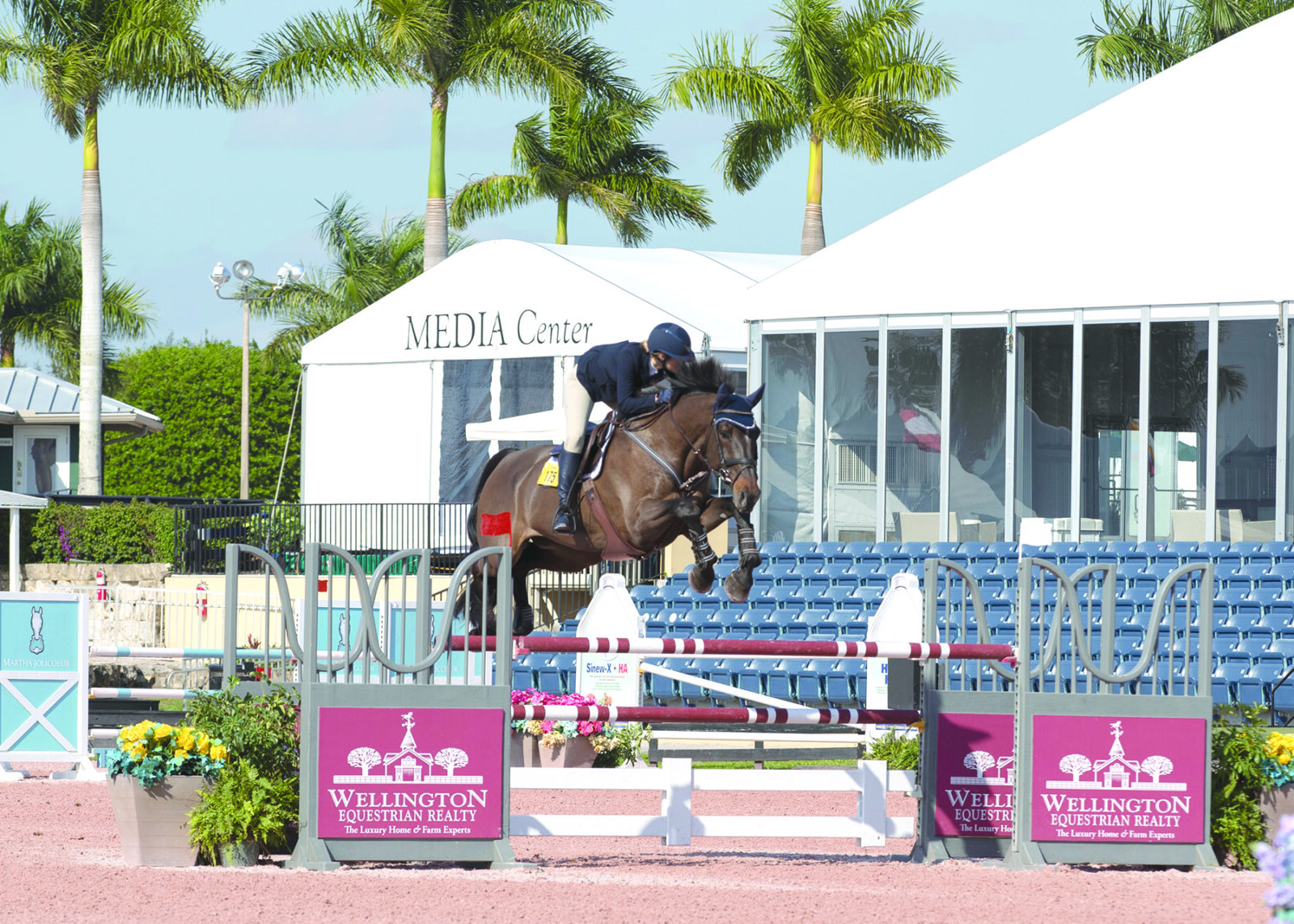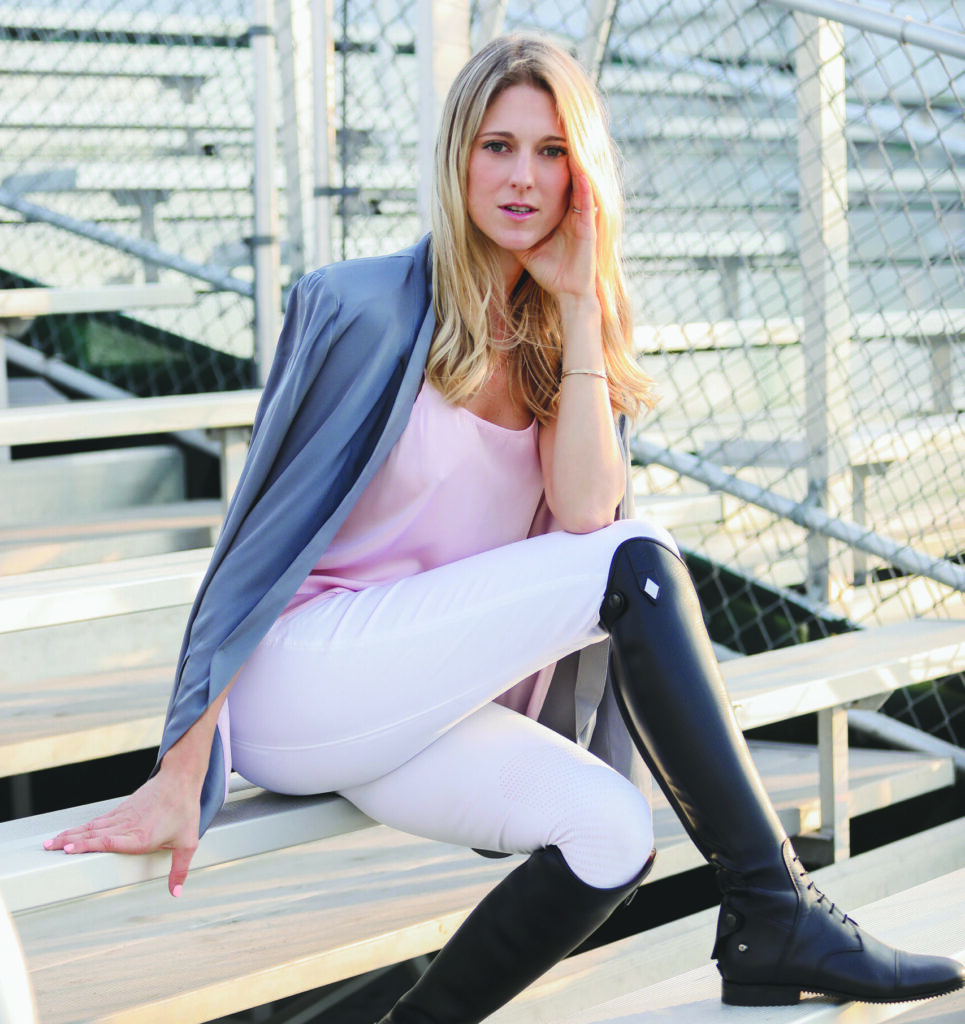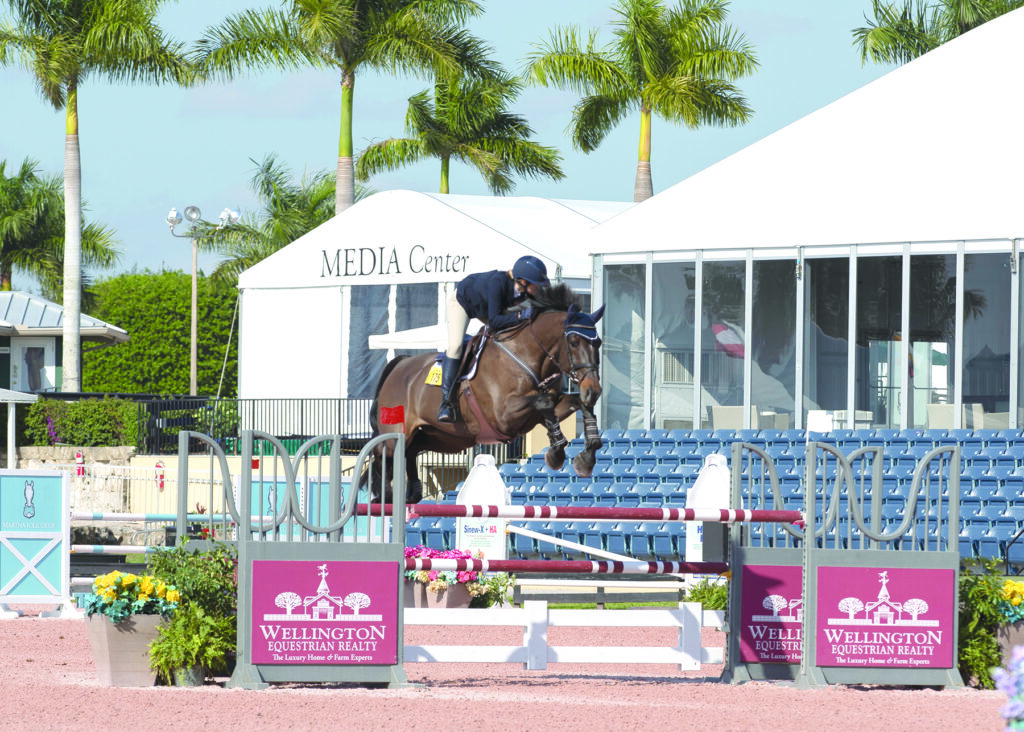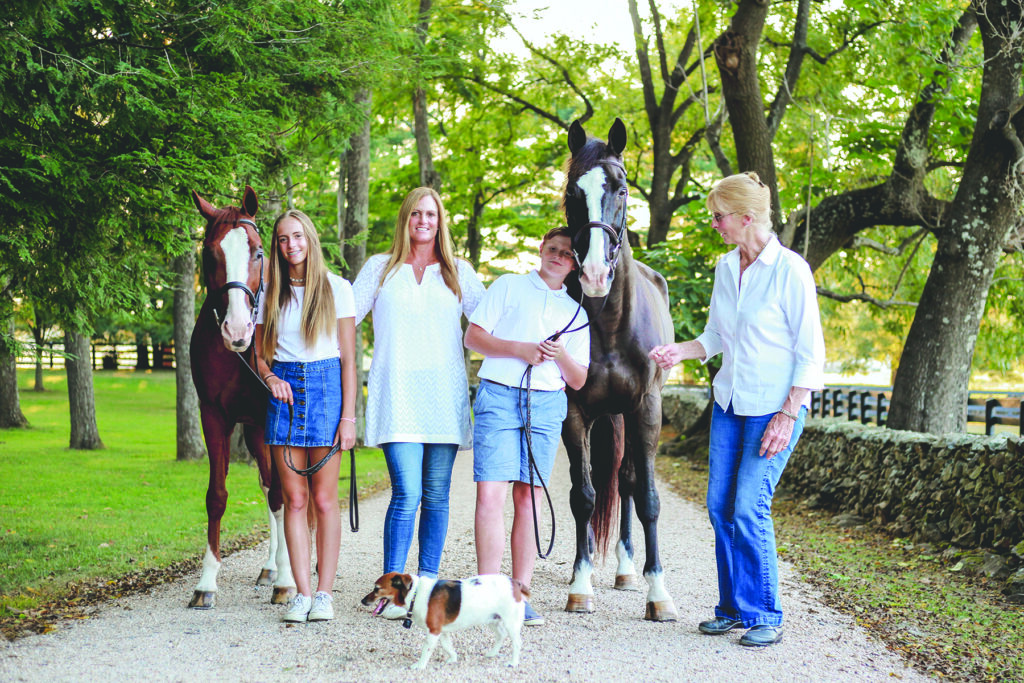Wellington Winter

Written by Chelsea Rose Moore
There were 10 weeks of horses and winter sunshine at this year’s Winter Equestrian Festival (WEF), one of the largest hunter/jumper and longest-running equestrian events in the world.
Although it wrapped up two weeks early due to COVID-19, we interviewed Middleburg locals Lindsay Simmons and Jonelle Mullen about their experiences, giving you an insider’s look at what it’s like to show in Wellington, Florida.
Lindsay Simmons
Tell me about yourself.
Sometimes we get called the youngest “snowbirds” ever when we hook up our trailer, load our horses and head to Florida every November. I travel down with my 2-year-old daughter, London, and my husband Tyler Beale. My incredibly supportive husband commutes back and forth between Virginia and Wellington to keep up with his real estate business while I stay in Florida and do my best at balancing horses, family and The Simmons Team at Caliber Home Loans with my sister and partner (Katie Simmons Hickey).
I started riding when I was 4, but I took an eight-year break when I turned 14. I focused on school and starting a career that could support my “hobby.” I now have two warmbloods, Don Loma and Capella, who I compete in the High and Medium Amateur-Owner Jumper Divisions with the help of my talented coach, David Matisz.

Lindsay Simmons wearing Nouvelle and Fratelli Fabbri Boots. Photo by Sas Equine Photography.
What’s it like showing at WEF?
It’s literally 12 jampacked weeks of bouncing between your barn to school your horses and the showgrounds to compete. Saturday night is the biggest class of the week, where you can find all the top riders in the world competing against each other in the Grand Prix. There is no shortage of the same riders who also compete the next day in the Amateur Division Classics against me. I’m so lucky to have the incredible opportunity to sit and work from my laptop in the International Club that overlooks the Grand Prix ring, where I have access to constant free lessons in show jumping from the best of the best as I get to watch them compete day after day.
What’s the social scene like there?
There is always something to do. The social scene is just as world-class as the riding.
Where do people go out?
When the Player’s Club shut down, where they are now building new luxury condos, a few places stepped up their nightlife game. Google “Player’s Club Wellington,” and you’ll be sure to find many well-known names that have stepped through those doors and have a story or two to share.
You have The Gallery, where everyone heads after (or during) the Grand Prix on Saturday nights and to White Horse across the pond thereafter. On Sundays, you’ll find most people heading over to watch high goal polo at the International Polo Club Palm Beach and finishing the night by the pool with music.
I love The Trophy Room, where you can find delicious food, and if you are feeling like staying out, you don’t have to go anywhere as the tables are moved over for dancing once the DJ arrives.
The other great part about Wellington is that you’re only a short drive from Palm Beach, where you’ll find all the best shopping and beaches on the East Coast.

Lindsay Simmons showing at WEF. Photo by Shelby Bonnie.
What are the shows like?
Whether you’re a rider or new to the sport, the experience of watching the horse show at WEF is like no other. The level of competition doesn’t compare to anywhere in the U.S.
It’s been a bit of a transition becoming a mother and trying to continue to compete at this level of show jumping. Every time you go into the ring, you have to focus on the course at hand and leave behind work stress and baby responsibilities when you mount, not only for yourself, but because you owe it to your horse.
What are your thoughts on the early closure of WEF due to COVID-19?
It was a big season for me crammed into 10 “short” weeks. With David Matisz’s help, I moved up and had some great placings in the High Amateur-Owner division, which I only ever dreamed of doing. It’s even more special because Dom and I have competed together since he was 4 years old, and we did this together.
While it wasn’t the ending any of us dreamed of during our last two weeks at WEF, it does give us all a time to hit the reset button, which rarely ever happens in this sport unless you’re grounded by an injury. My horses are more tired than I know by week 10. My family misses me; my mind misses me between juggling horses, baby and work, and I’ve gained more experience in the show ring than I could ever apply to bettering myself at home schooling the horses for the next few months. So when things do get better—and they will—we will all come back that much stronger because we did hit the reset button on ourselves and on our horses and took some forced time to slow down and get to know life a little better again.
Jonelle Mullen
Tell me about yourself. Had you shown at the Winter Equestrian Festival before?
I train mostly show hunters at TuDane at Rutledge Farm in Middleburg. We decided this year to go down to show for three weeks in February. We happened to get lucky and get some stalls off the showgrounds. We showed at Virginia Horse Center the end of January, and then [we] shipped down from there to Wellington. The students did well; the weather was nice, and the horses were happy.
Tell me about the scene at WEF.
It’s good for customers because there’s lots for them to do. We didn’t do a lot of the social stuff. We were busy working early mornings, every day. But we did get together as a group to watch the Hunter Spectacular, and on our last weekend, we all went to the Grand Prix on Saturday.
It’s really good to be down there and see the best of the best. It’s good for my students to see quality horses and riders and different techniques of training and different ways of going. It’s a really busy and big horse show, with 12 rings.

Jonelle Mullen and her family. Photo by SAS Equine Photography.
Sometimes you know people are down there, and you might not see them for weeks. This is the first time I’ve been in 10 years. It’s significantly bigger. It’s really great. They have a show program called ShowGroundsLive up and running all time, so you can see what’s going on in all rings at any given time, which is especially helpful in classes where you have to jog for soundness. It’s a pretty well-oiled machine down there. There are nice courses, nice jumps, palm trees, and 80-degree [weather].
Who attends?
During the weekend’s big events on Saturday and Sunday, there’s a lot of local general public. They don’t know a lot about horses; they just come to watch. Lots of the regular horse people go and watch [too]. On Saturday night, there are kid’s games and face painting.
[There are] not a lot of spectators during the week besides the exhibitors, trainers and other horse people on and around the showgrounds for the season. The weekend [brings a] pretty big local community.I think it’s a great experience. When you go for a short term, you can realistically incorporate the expense into your annual show budget. It’s amazing, just to see that level of quality and training and horses.
What are your thoughts on the early closure of WEF?
The shows shutting down is a real bummer for all of us, but it has given us time to get back to basics and enjoy our horses without an agenda. ML
This article first appeared in the April 2020 issue of Middleburg Life.


